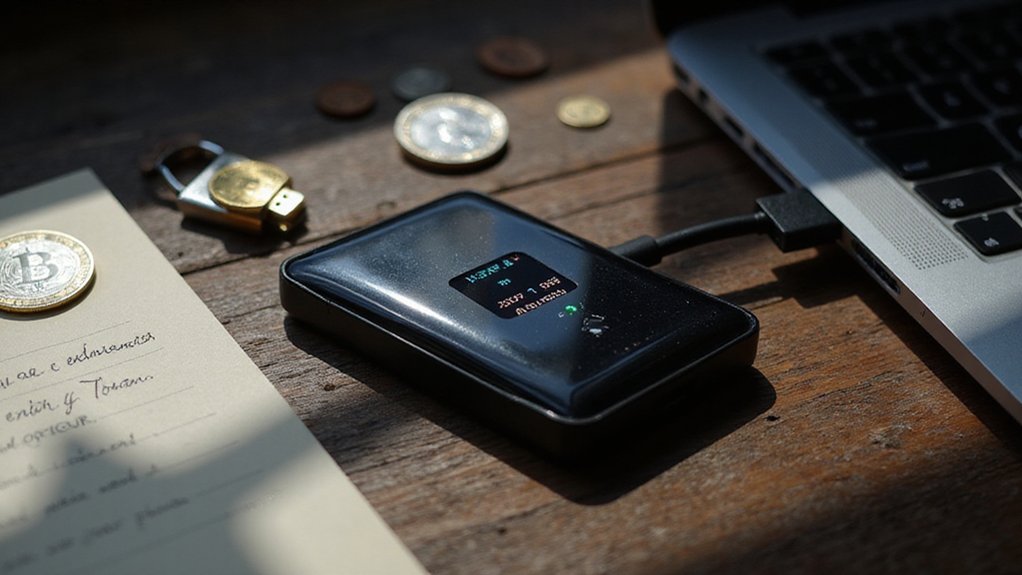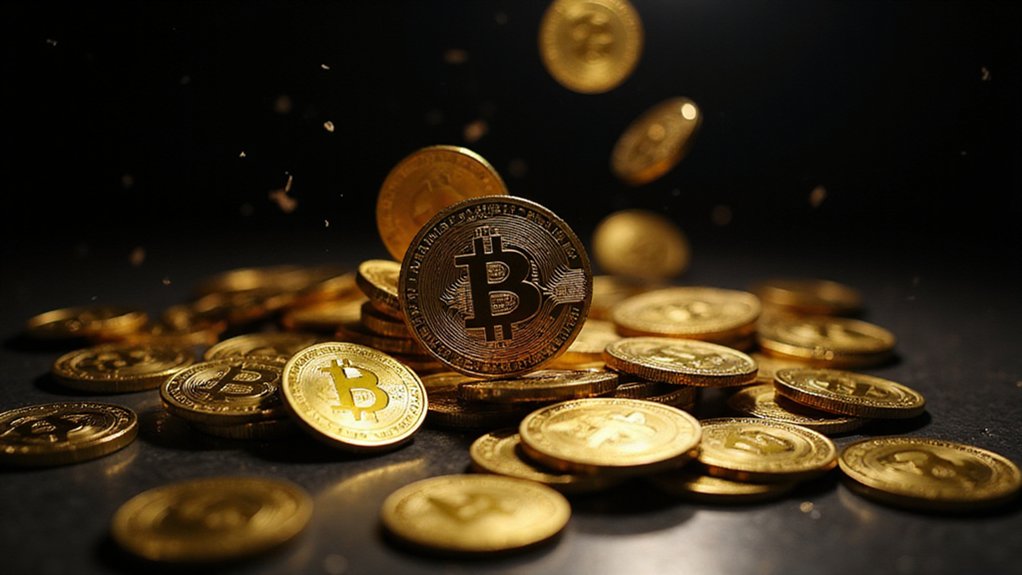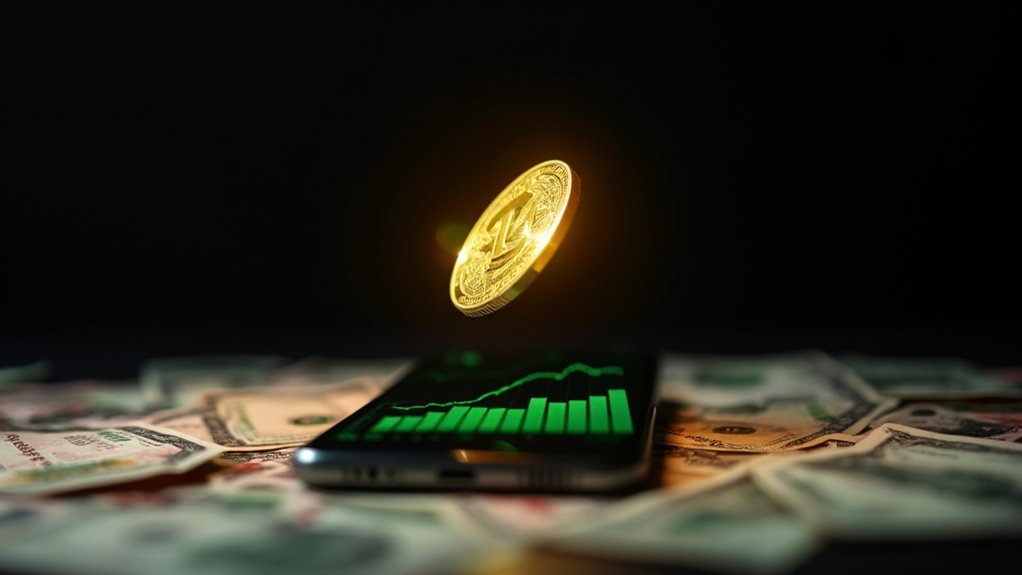Gas limit represents the maximum computational effort a user allocates for cryptocurrency transaction execution, functioning as both a financial safeguard and resource governor. Users specify this threshold before initiating transfers or smart contract operations, with unused gas returning to their wallets while excess requirements cause transaction failure. This mechanism prevents network overload while ensuring predictable costs—though the asymmetric risk of underfunding versus overfunding creates intriguing strategic considerations that merit deeper exploration.

How does one prevent a simple cryptocurrency transaction from accidentally draining an entire digital wallet or, conversely, grinding to a halt mid-execution like a car running out of fuel on a highway?
The answer lies in understanding gas limits—a protective mechanism that functions as both computational governor and financial safeguard in blockchain networks.
Gas limit represents the maximum computational effort units a user allocates for transaction execution.
Gas limit functions as your transaction’s computational fuel tank—determining how far your blockchain journey can travel before running empty.
Think of it as setting a fuel tank capacity before setting out on a journey; the tank size determines how far one can travel, though the actual distance may vary based on terrain complexity.
In Ethereum and similar networks, users specify this maximum threshold before initiating any transaction, whether transferring tokens or executing intricate smart contract operations.
The mechanism operates with elegant simplicity: block validators process transactions only when gas consumption remains within the predetermined limit.
Should computational requirements exceed this threshold—perhaps due to underestimating a smart contract’s complexity—the transaction fails entirely, though the gas already consumed vanishes into the digital ether (a particularly cruel irony given Ethereum’s nomenclature).
Conversely, unused gas returns to the sender, ensuring users pay solely for actual computational work performed.
This system serves multiple masters simultaneously.
Network operators benefit from resource management that prevents computational overload, while users gain cost predictability and control.
The delicate balance between gas limit and gas price—the fee per computational unit—determines both transaction cost and processing priority.
Higher prices, not limits, typically accelerate transaction processing, though excessively generous limits can artificially constrain block capacity.
Strategic gas limit selection requires understanding transaction complexity.
Simple transfers demand minimal computational resources, while sophisticated smart contract interactions—particularly those involving multiple function calls or complex calculations—necessitate substantially higher allocations.
Most modern wallets provide recommended limits based on network conditions and transaction type, though users retain ultimate authority over these settings.
Modern blockchain platforms utilize gas fees as incentive mechanisms for validator nodes to prioritize and process transaction blocks efficiently.
These self-executing digital agreements operate using coded conditions that trigger automatic fund transfers or asset registrations when parameters are met, making gas limit estimation crucial for their successful deployment.
The consequences of miscalculation prove asymmetric: insufficient limits guarantee failure with partial gas forfeiture, while excessive limits merely tie up resources temporarily without additional cost penalties—a rare instance where blockchain economics favors caution over aggression.
Frequently Asked Questions
How Do I Calculate the Optimal Gas Limit for My Transaction?
One calculates ideal gas limits through wallet estimations (surprisingly reliable), network congestion analysis, and dedicated tools like Etherscan’s Gas Tracker.
Simple transfers require modest limits—around 21,000 gas—while complex smart contract interactions demand higher allocations.
The prudent approach involves checking real-time network conditions, testing transactions on testnets first, and avoiding the classic amateur mistake of wildly overpaying for straightforward operations that blockchain novices inexplicably complicate.
What Happens if I Set My Gas Limit Too Low?
When traders set gas limits below computational requirements, their transactions face an unforgiving reality: execution failure with complete gas forfeiture.
The blockchain network processes the attempt until resources exhaust, then unceremoniously terminates the transaction—keeping the fees as consolation.
During network congestion, insufficient gas relegates transactions to indefinite purgatory, where they languish unprocessed while validators prioritize higher-paying competitors, forcing users to resubmit with appropriately inflated limits.
Can Gas Limits Vary Between Different Cryptocurrency Networks?
Gas limits exhibit considerable variation across cryptocurrency networks, with each blockchain implementing distinct fee structures and computational models.
Ethereum’s gas system differs markedly from Bitcoin’s transaction fees or Solana’s compute units.
Networks like Polygon offer substantially lower gas requirements, while layer-2 solutions often employ entirely different mechanisms.
These disparities reflect varying architectural choices, consensus algorithms, and economic models—creating a fragmented landscape where transaction costs and limits fluctuate dramatically between protocols.
Do Failed Transactions Still Consume Gas From My Wallet?
Failed transactions consume gas up to the failure point—a somewhat brutal reality that catches newcomers off-guard.
The computational work already performed (validation, execution steps, network resources) requires compensation regardless of outcome.
Users lose gas fees for operations completed before failure, though unused gas from their limit gets refunded.
This mechanism prevents spam attacks while ensuring miners receive payment for legitimate computational effort, even when transactions ultimately fail.
Is There a Maximum Gas Limit I Can Set?
The maximum gas limit one can set equals the current block gas limit—presently 36 million units on Ethereum, though validators may boost this to 60 million.
While users can theoretically set astronomical limits, transactions exceeding the block threshold simply won’t process.
Setting excessively high limits risks overpaying fees unnecessarily, though wallets like MetaMask typically suggest reasonable defaults.
Remember: failed transactions still consume gas, making prudent limit-setting essential for avoiding costly computational dead ends.









